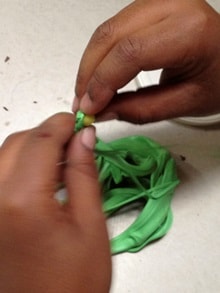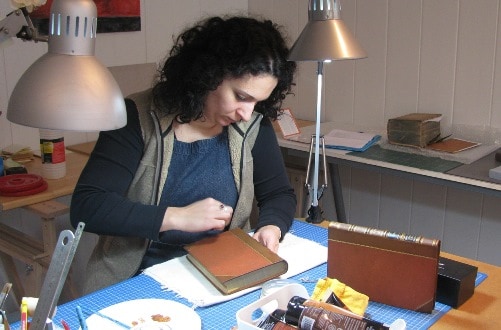Guiding your young authors through the creative writing process – developing writers
1 March 2014
The building blocks to handwriting success
17 March 2014
Captain Louis H. Cohn, owner of The House of Books, a New York bookshop specializing in modern first editions, once loaned Ernest Hemingway a first edition of one of Hemingway’s own novels. When it came back Cohn commented to his wife, “look what he has done, he’s written notes all over it and spoiled a lovely first edition.”
Of course, Cohn was all smiles. What Hemingway had done was to transform an ordinary first edition into a unique and much more valuable book, an “association copy” to be treasured by any collector.
The rare book collection in the American Library in Paris is rich in association copies. There’s Marlene Dietrich’s own annotated copy of The Blue Angel, a presentation copy of Willa Cather’s O Pioneers!, a copy of Allen Ginsberg’s Howl and Other Poems inscribed to the French poet Alain Bosquet, or, of direct connection to the history of the American Library, a copy of Alan Seeger’s Poems inscribed to the library’s World War II heroine, Clara Longworth, countess de Chambrun, or books with the bookplate from the Library’s founding in 1920.
Ownership of such treasures brings with it a responsibility of stewardship. Books are fragile items, subject to damage from normal use and sometimes from misguided repairs made by well-meaning amateurs. Generally, a worn-out copy of a book is discarded and replaced, but when it has meaning beyond the text, we have a responsibility to care for it.
Thanks to a recent gift from the estate of Jane Holtz Kay, historian and writer, whose daughter Jacqueline Cessou and her family are Library members, the American Library is able to survey our holdings of rare and otherwise special books and to identify those in need of preservation treatment either to correct existing problems or, equally important, to provide protective housing to prevent future wear and tear.
For example, the copy of Ginsberg’s Howl will have the rusting staple removed and replaced with linen thread. Then the book, really a small pamphlet, will be housed in an acid-free envelope with a protective sleeve so it will not suffer damage when it or other books near it are moved about on the shelves. More challenging are the cases of Willa Cather’s O Pioneers! (Boston, 1913) and Alan Seeger’s Poems (New York, 1916), each of which was “repaired” some time in the past with transparent adhesive tape over the original binding. These books require the careful removal of the tape and the cleaning and restoration of the bindings and housing in acid-free conservation boxes. The goal is to return each book, as much as is possible, to its original condition.
Of course, not all of the Library’s conservation needs involve extensive repairs to individual items. The periodicals collection is a case in point. Magazines do not like to stand up, and if they are stored flat it is difficult to get issues out of the bottom of the pile. To resolve this, we are in the process of putting manageable numbers of magazines in protective boxes, made in-house, such as those you see in the conference room.
To handle the hands-on conservation work we have turned to Gladys Sroussi (pictured above) of Livres en vie in Versailles, a highly skilled professional. She has in hand an initial group of ten books covering a range of the problems to be addressed. This pilot project will help us evaluate the nature of the work yet to be done.


